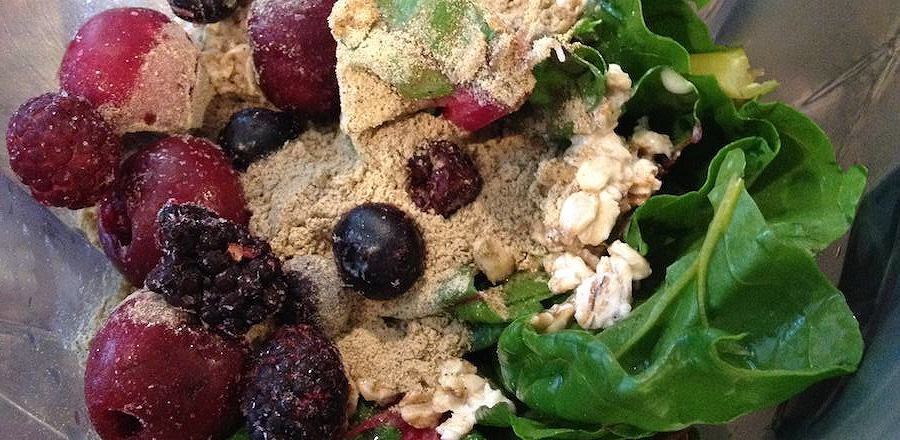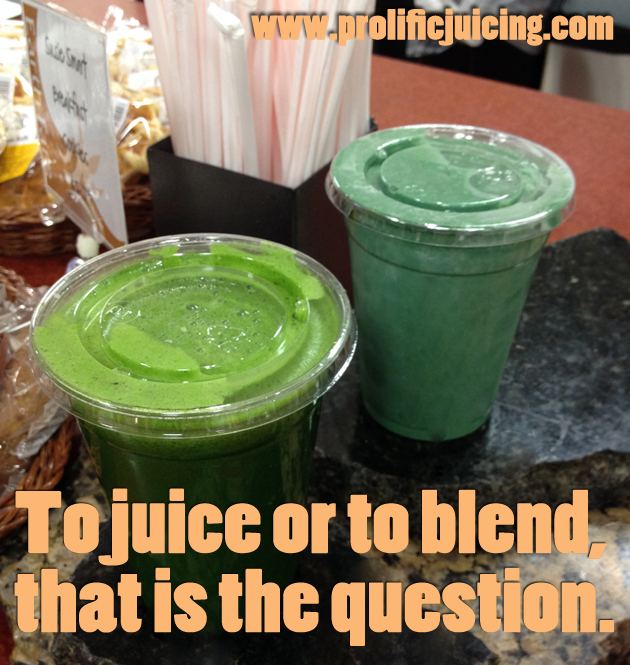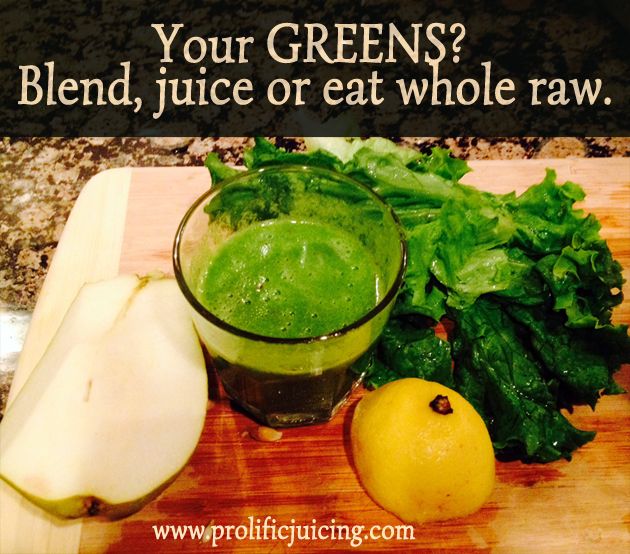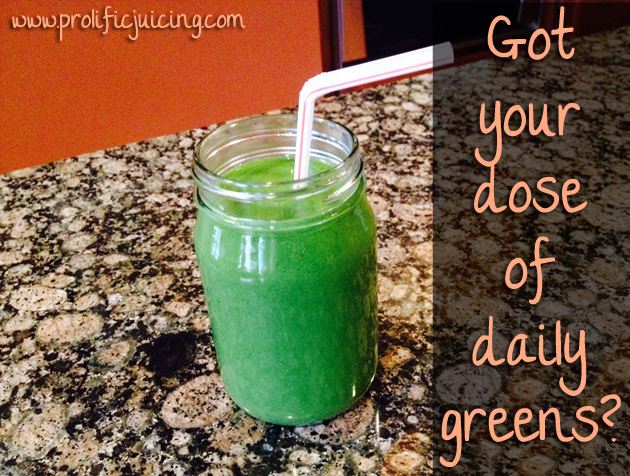I get asked this question a lot of times: “Farnoosh, should I juice or blend? Which one is better?”
There’s an on-going debate between the two groups that support juicing and blending. In the battle of juicing vs blending, it’s not easy to give a short answer without backing up with good reasons.
So let’s start with putting both approaches under the microscope, shall we?
Juicing vs. Blending: What to Choose?
The biggest difference between juicing and blending is the absence of fiber in juices.
Green juicing is the process of extracting water and nutrients from veggies and fruits by discarding the fiber. Juicing can help you boost your regular intake of veggies and fruits. Your juice can include vegetables like kale and beets that you normally don’t add in food recipes or don’t know how to consume.
When you take nutrients in the juice form, your digestive system can slow down because the nutrients are directly absorbed by your blood cells. With a smoothie, because it still has rich fiber in it, it is still considered food. This type of food will take longer to digest than juice and it takes your body a little more work to absorb the nutrients and minerals.
With a juice, you’re also getting more vegetable and green nutrient-rich content in each serving because the fiber is stripped off. Regular juicing therefore allows for a quick boost in energy levels.
All in all, a glass of pure green juice is great to keep you hydrated every 2-4 hours.
Juicing will take a higher amount of veggies and fruits to produce the same serving size as a smoothies, so make sure you have enough refrigerator space to store them. Also, it is more slightly expensive than blending in general because of the two-fold reason: You need more veggies and good juicers are priced higher than blenders in the market.
Blending, on the other hand, will keep you full for a longer time. This is because with smoothies, you blend everything together including vegetables, fruits, nuts, yogurt, protein powder, flaxseed, chia seeds, other super-foods and healthy fats such as banana and avocado which do not juice well.
When we first bought our commercial-grade, high-powered blender Vitamix, the results were amazing. Vitamix is phenomenal at breaking down tough fruits and veggies. The result is a smooth, rich, silky smoothie with easily digestible fiber.
Of course, if you don’t want a rich smoothie-like result, you can keep blending for longer to get a juice-like result, but it’s still not 100% juice.
You can play with a variety of veggies and fruits that do not juice well but blend great. Examples are bananas and avocados.
Kids especially love smoothies and you can dress the smoothie up like a dessert by adding a frozen banana or ice-cream.
But beware – don’t go overboard with adding honey, dried fruits, sweetened milk and other sugary ingredients in order to keep sugar intake under control and keep your smoothies nice and healthy.
Blenders come at a cheaper price than juicers and they are easier to clean. They however generate a lot of heat when blending that may kill the good enzymes in your smoothie, so make sure you cool off your smoothie before you drink it up.
So Which One Should I Go for?
Truth be told, I would tell you to listen to your heart and start with either (or both!) of the two. There is no reason why you should only juice or only blend. Both have their own pros and cons, and I’d rather let you make your own decision than participate in the heated debate about juicing versus blending! 🙂
To help you out, here’s some pointers to consider.
Go with juicing when:
1. You’re looking for a quick-to-absorb dose of nutrients and minerals.
2. Want to detox and cleanse your body.
3. Want to give your digestive system a break.
4. Want to enjoy a yummy, hydrating drink that keeps you nourished for 2-4 hours.
5. Don’t mind the extra work involved in cutting and cleaning veggies and fruits and cleaning the juicer later on.
Go with blending when:
1. You’re in a rush and want something to keep you full for longer.
2. Want to substitute a meal with a smoothie.
3. Want to enjoy the rich texture of fiber in your drink.
4. Want to enjoy nuts, chia seeds, and other super-foods as a part of your drink.
5. You are more hungry than thirsty.
As I said before, there is no reason to stick to one or the other. You can do both, or pick one depending on what works for you. Both juicing and blending are beneficial in different ways.
To make it simpler, always listen to what your body is saying. For example, if you feel more energetic after juicing, go with it by rotating veggies and fruits.
Personally, I go through phases, even though juicing is my first love. Right now I am deep in the writing and finalizing of my next book, The Healthy Smoothie Bible, so blending has taken over my life. In the summer months, I return to more juicing.
That’s why I’ve invested in both types of machines – a high-end juicer (Greenstar and Omega) and a power blender (Vitamix) – and to this day, I never regretted the decision to spend over $1000 in all these machines combined and in putting prevention of health issues above fixing them in the aftermath.
What about you?
To learn more about how green juicing can help you lose weight along with other benefits such as how to use the right veggies and how to shop and organize for all your juicing needs, get the Healthy Juicer’s Bible here.




[…] to your body to know what is right for you. That may change, from day to day or week to week. In this article on juicing vs blending, Farnoosh gives some great tips on when to blend and when to juice and the benefits of […]